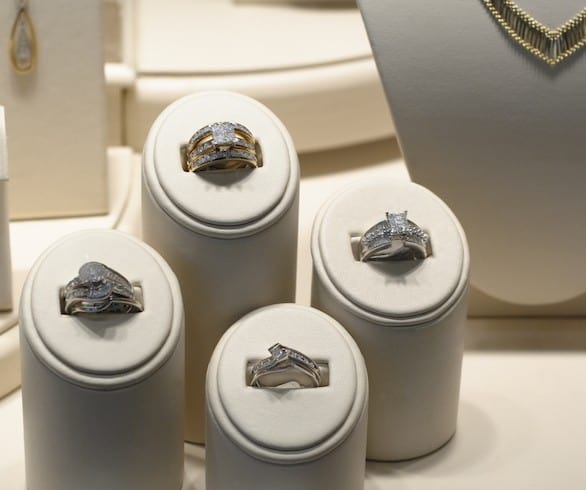How vulnerable is your store when it comes to diamond switching?
By John Lamont, Director of Loss Prevention, JVC
ON OCTOBER 7TH 2016, an older male and female entered W. Smith and Company Fine Jewellery in Saint John, New Brunswick. After asking to see several loose diamonds, the couple left. A sales associate quickly discovered that a carat diamond had been switched with a fake stone.
The store had an excellent camera system, and the entire event was cap- tured on video. The police were called.
While such thefts—known as “diamond switching”—are usually kept quiet, Wayne Smith, the owner of the aforementioned store, decided to speak out: his security footage of the culprits was so clear that it could be used to pre- vent these criminals from striking again.
After Mr. Smith went public and the video was displayed on national news outlets, the calls started coming in. Smith says he now knows directly of half a dozen thefts from Vancouver to the Maritimes, noting that there are likely dozens more.
When other jewellers saw the footage, they meticulously checked their own inventories. Unfortunately, some also found fake diamonds in their displays. When they reviewed their camera systems, they found that the same sus- pects that robbed Smith’s store had hit them. Within days, the perpetrators were arrested in York Region, located just north of Toronto.
Unlike Mr. Smith, many jewellers choose not to report incidents like these. Their reasons are varied: some believe the police simply won’t be able to help, while others don’t want to admit to being robbed, as it may encourage further burglary attempts.
JVC has often suggested that every day a jeweller is open for business, an “opportunity thief” will enter their place of business. If given the chance to steal, these individuals absolutely will. When it comes to preventing crime, there is no competition between jewellers: we are all on the same side, and should work to protect one another.
It is important to note that the perpetrators of these crimes are not rocket scientists. As such, having simple crime prevention procedures in place will make a world of a difference. Moreover, if you are victimized, having cameras in place will aid in catching your attackers. Networking is also key to preven- tion and apprehension. By understanding what other jewellers have recently faced, you may better protect yourself (and vice-versa).
Several years ago, a diamond thief was arrested in New York State for dia- mond switching. As part of his sentence, the court ordered him to produce a video explaining how he committed the crime. In his words, when he cased a potential victim, he wanted to see how they showed diamonds. Did they take several diamonds out at once? Did they diamond test before showing the dia- mond to the customer? Most importantly, did they test the stones when they got them back from customers?
On JVC crime web page, we recommend how to incorporate security methods into showing diamonds. Enacting simple policies can prevent huge losses.
Remember: If you are not part of the solution, you become part of the problem. CJ
![]()








